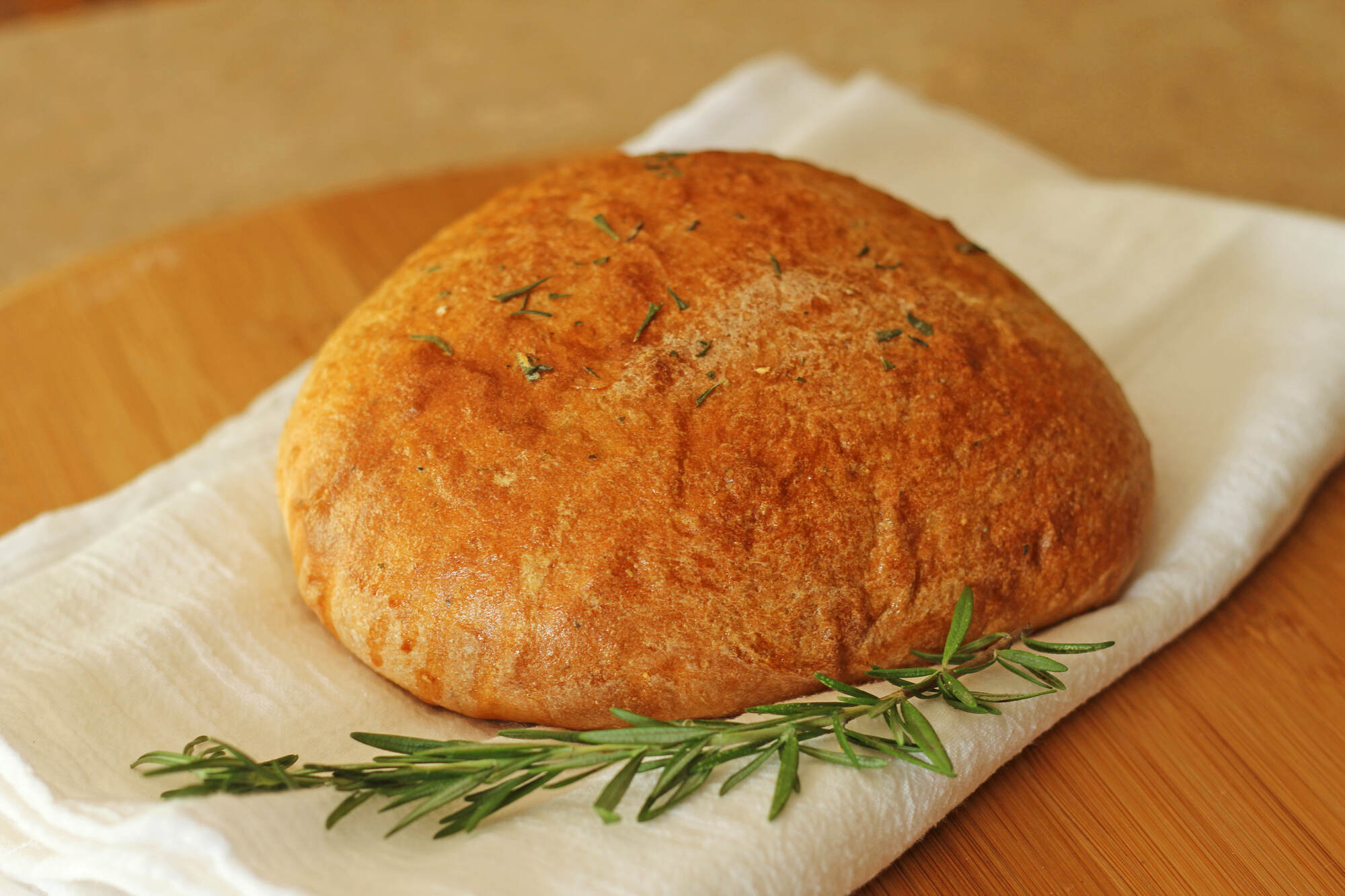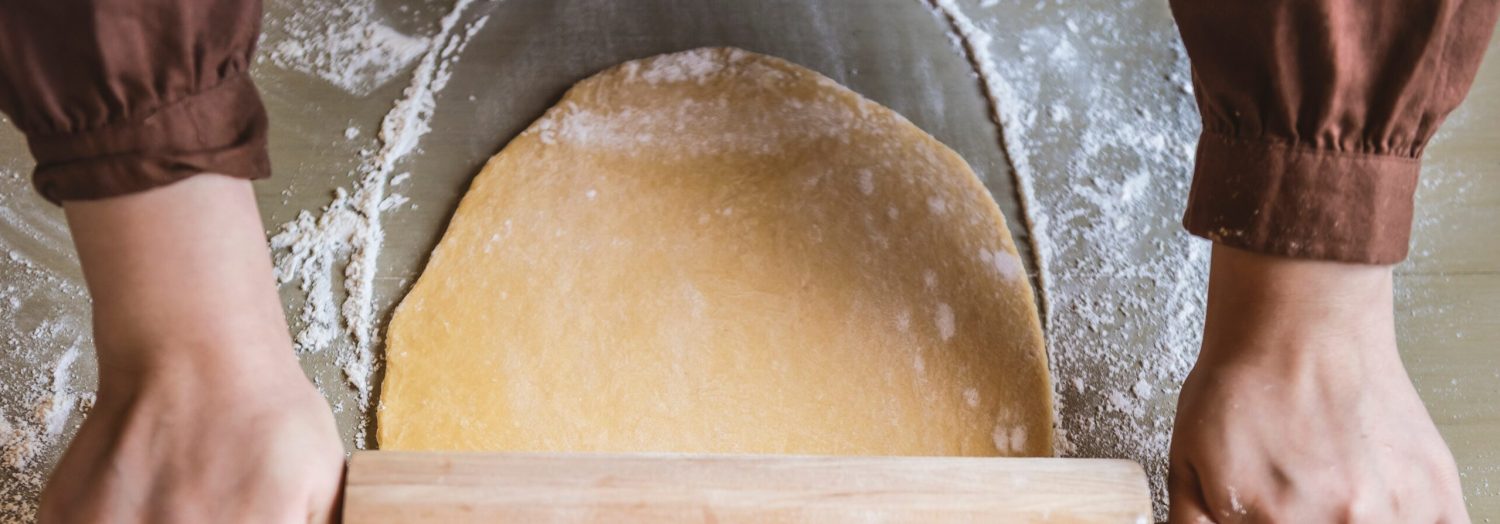This rosemary herb bread is a delightful addition to any meal, offering a fragrant and savory flavor that pairs well with a variety of dishes. The combination of fresh rosemary and olive oil gives this bread a unique taste that is both rustic and refined.
If you don't typically keep fresh rosemary in your kitchen, you may need to pick some up at the supermarket. Fresh rosemary can usually be found in the produce section, often near other fresh herbs. Additionally, make sure you have active dry yeast on hand, which is essential for the bread to rise properly.

Ingredients for Rosemary Herb Bread Recipe
Flour: The base of the bread, providing structure and texture.
Rosemary: Adds a fragrant, earthy flavor to the bread.
Salt: Enhances the overall flavor of the bread.
Sugar: Feeds the yeast and adds a touch of sweetness.
Yeast: Helps the bread rise and become fluffy.
Water: Activates the yeast and combines the ingredients.
Olive oil: Adds moisture and richness to the bread.
Technique Tip for Baking Herb Bread
When kneading the dough, use the heel of your hand to push it away from you, then fold it back over itself and give it a quarter turn. This technique helps develop the gluten structure, resulting in a bread that is both chewy and airy. If the dough is too sticky, lightly dust your hands and the surface with flour, but be careful not to add too much, as this can make the bread dense.
Suggested Side Dishes
Alternative Ingredients
all-purpose flour - Substitute with whole wheat flour: Whole wheat flour adds a nutty flavor and more fiber, though it may make the bread denser.
fresh rosemary - Substitute with dried rosemary: Use half the amount of dried rosemary as it is more concentrated in flavor.
salt - Substitute with sea salt: Sea salt can provide a slightly different mineral profile and a more complex flavor.
sugar - Substitute with honey: Honey adds a natural sweetness and moisture, though it may slightly alter the texture.
active dry yeast - Substitute with instant yeast: Instant yeast can be mixed directly with dry ingredients and may speed up the rising process.
warm water - Substitute with milk: Milk can add richness and a softer crumb to the bread.
olive oil - Substitute with melted butter: Melted butter adds a richer flavor and a softer texture to the bread.
Alternative Recipes Similar to This Bread
How to Store or Freeze Your Herb Bread
Allow the rosemary herb bread to cool completely on a wire rack before storing or freezing. This prevents condensation from forming inside the storage container, which can make the bread soggy.
For short-term storage, place the bread in a bread box or wrap it in a clean kitchen towel. This will keep the crust crisp while maintaining the bread's moisture.
If you prefer using plastic, wrap the bread tightly in plastic wrap or place it in a resealable plastic bag. This method is effective for keeping the bread fresh for up to 3 days at room temperature.
To extend the bread's freshness, store it in the refrigerator. Wrap it in plastic wrap or aluminum foil and place it in an airtight container. This can keep the bread fresh for up to a week.
For freezing, slice the bread before freezing. This allows you to take out only the number of slices you need without defrosting the entire loaf.
Wrap each slice or the entire loaf tightly in plastic wrap, then wrap it again in aluminum foil. This double wrapping helps prevent freezer burn.
Place the wrapped bread in a resealable freezer bag, removing as much air as possible before sealing. Label the bag with the date to keep track of its freshness.
When ready to use, thaw the bread at room temperature. For a quick thaw, you can microwave individual slices on a low setting for a few seconds or toast them directly from frozen.
To refresh the crust, preheat your oven to 350°F (175°C) and place the thawed bread directly on the oven rack for about 10 minutes. This will help restore its original texture and flavor.
Avoid storing the bread in the refrigerator if you plan to consume it within a few days, as refrigeration can cause the bread to dry out faster.
How to Reheat Leftovers
Preheat your oven to 350°F (175°C). Wrap the rosemary herb bread in aluminum foil to prevent it from drying out. Place it directly on the oven rack and heat for about 10-15 minutes until warmed through.
For a quick reheat, slice the bread and place the slices in a toaster or toaster oven. Toast on a medium setting until the edges are crispy and the inside is warm.
If you prefer a microwave method, wrap the bread in a damp paper towel and place it on a microwave-safe plate. Heat on medium power for 10-20 seconds. Be cautious not to overheat, as this can make the bread chewy.
For a stovetop method, heat a skillet over medium heat. Place the bread slices in the skillet and cover with a lid. Heat for about 2-3 minutes on each side until the bread is warm and slightly crispy.
To add a bit of extra flavor, brush the bread slices with olive oil or butter before reheating in the oven or on the stovetop. This will give the bread a delightful, crispy texture and enhance the rosemary aroma.
Essential Tools for Baking Herb Bread
Mixing bowl: A large bowl used to combine the flour, rosemary, salt, and sugar.
Measuring cups: Used to measure the 3 cups of all-purpose flour and 1 cup of warm water.
Measuring spoons: Used to measure the 1 tablespoon of fresh rosemary, 1 teaspoon of salt, and 1 tablespoon of sugar.
Wooden spoon: Used to mix the yeast mixture and olive oil into the dry ingredients.
Floured surface: A surface dusted with flour to knead the dough.
Greased bowl: A bowl coated with oil to place the dough for rising.
Kitchen towel: Used to cover the dough while it rises.
Baking sheet: Used to place the shaped loaf for baking.
Oven: Preheated to 375°F (190°C) for baking the bread.
Wire rack: Used to cool the bread before slicing.
Knife: Used to slice the cooled bread.
How to Save Time on This Recipe
Prepare ingredients ahead: Measure and chop rosemary and other ingredients in advance to streamline the process.
Use a stand mixer: Utilize a stand mixer with a dough hook to mix and knead the dough, saving you time and effort.
Warm environment: Let the dough rise in a slightly warm oven (turned off) to speed up the rising process.
Preheat oven early: Start preheating your oven while the dough is rising to save time.
Shape dough quickly: Punch down and shape the dough efficiently to get it into the oven faster.

Rosemary Herb Bread Recipe
Ingredients
Main Ingredients
- 3 cups All-purpose flour
- 1 tablespoon Fresh rosemary, chopped
- 1 teaspoon Salt
- 1 tablespoon Sugar
- 1 packet Active dry yeast
- 1 cup Warm water
- 2 tablespoon Olive oil
Instructions
- 1. In a large mixing bowl, combine the flour, rosemary, salt, and sugar.
- 2. Dissolve the yeast in the warm water and let it sit for about 5 minutes until frothy.
- 3. Add the yeast mixture and olive oil to the dry ingredients and mix until a dough forms.
- 4. Knead the dough on a floured surface for about 10 minutes until smooth and elastic.
- 5. Place the dough in a greased bowl, cover, and let it rise in a warm place for about 1 hour or until doubled in size.
- 6. Preheat your oven to 375°F (190°C).
- 7. Punch down the dough, shape it into a loaf, and place it on a baking sheet.
- 8. Bake for 30 minutes or until the bread is golden brown and sounds hollow when tapped.
- 9. Let the bread cool on a wire rack before slicing.
Nutritional Value
Keywords
More Amazing Recipes to Try 🙂
- Strawberry Beer Bread with Fresh Basil Recipe1 Hours
- Raspberry Banana Bread Recipe1 Hours 15 Minutes
- Chewy French Baguette Recipe45 Minutes
- Melted Ice Cream Bread Recipe45 Minutes
- Pizza Oven Dough Recipe25 Minutes
- Banana Crumb Bread Recipe1 Hours 15 Minutes
- Pretzel Crust Recipe25 Minutes
- Rolls Recipe35 Minutes

Leave a Reply